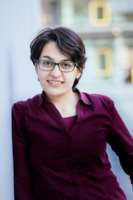Abstract
Modern approaches to pose and body shape estimation have recently achieved
strong performance even under challenging real-world conditions. Even from a
single image of a clothed person, a realistic looking body shape can be
inferred that captures a users' weight group and body shape type well. This
opens up a whole spectrum of applications -- in particular in fashion -- where
virtual try-on and recommendation systems can make use of these new and
automatized cues. However, a realistic depiction of the undressed body is
regarded highly private and therefore might not be consented by most people.
Hence, we ask if the automatic extraction of such information can be
effectively evaded. While adversarial perturbations have been shown to be
effective for manipulating the output of machine learning models -- in
particular, end-to-end deep learning approaches -- state of the art shape
estimation methods are composed of multiple stages. We perform the first
investigation of different strategies that can be used to effectively
manipulate the automatic shape estimation while preserving the overall
appearance of the original image.
BibTeX
@inproceedings{Sattar_ECCV20,
TITLE = {Body Shape Privacy in Images: {U}nderstanding Privacy and Preventing Automatic Shape Extraction},
AUTHOR = {Sattar, Hosnieh and Krombholz, Katharina and Pons-Moll, Gerard and Fritz, Mario},
LANGUAGE = {eng},
ISBN = {978-3-030-68237-8},
DOI = {10.1007/978-3-030-68238-5_31},
PUBLISHER = {Springer},
YEAR = {2020},
ABSTRACT = {Modern approaches to pose and body shape estimation have recently achieved<br>strong performance even under challenging real-world conditions. Even from a<br>single image of a clothed person, a realistic looking body shape can be<br>inferred that captures a users' weight group and body shape type well. This<br>opens up a whole spectrum of applications -- in particular in fashion -- where<br>virtual try-on and recommendation systems can make use of these new and<br>automatized cues. However, a realistic depiction of the undressed body is<br>regarded highly private and therefore might not be consented by most people.<br>Hence, we ask if the automatic extraction of such information can be<br>effectively evaded. While adversarial perturbations have been shown to be<br>effective for manipulating the output of machine learning models -- in<br>particular, end-to-end deep learning approaches -- state of the art shape<br>estimation methods are composed of multiple stages. We perform the first<br>investigation of different strategies that can be used to effectively<br>manipulate the automatic shape estimation while preserving the overall<br>appearance of the original image.<br>},
BOOKTITLE = {Computer Vision -- ECCV Workshops 2020},
EDITOR = {Bartoli, Adrien and Fusiello, Andrea},
PAGES = {411--428},
SERIES = {Lecture Notes in Computer Science},
VOLUME = {12539},
ADDRESS = {Glasgow, UK},
}Endnote
%0 Conference Proceedings %A Sattar, Hosnieh %A Krombholz, Katharina %A Pons-Moll, Gerard %A Fritz, Mario %+ Computer Vision and Machine Learning, MPI for Informatics, Max Planck Society External Organizations Computer Vision and Machine Learning, MPI for Informatics, Max Planck Society External Organizations %T Body Shape Privacy in Images: Understanding Privacy and Preventing Automatic Shape Extraction : %G eng %U http://hdl.handle.net/21.11116/0000-0007-D755-7 %R 10.1007/978-3-030-68238-5_31 %D 2021 %B 16th European Conference on Compute Vision %Z date of event: 2020-08-23 - 2020-08-28 %C Glasgow, UK %X Modern approaches to pose and body shape estimation have recently achieved<br>strong performance even under challenging real-world conditions. Even from a<br>single image of a clothed person, a realistic looking body shape can be<br>inferred that captures a users' weight group and body shape type well. This<br>opens up a whole spectrum of applications -- in particular in fashion -- where<br>virtual try-on and recommendation systems can make use of these new and<br>automatized cues. However, a realistic depiction of the undressed body is<br>regarded highly private and therefore might not be consented by most people.<br>Hence, we ask if the automatic extraction of such information can be<br>effectively evaded. While adversarial perturbations have been shown to be<br>effective for manipulating the output of machine learning models -- in<br>particular, end-to-end deep learning approaches -- state of the art shape<br>estimation methods are composed of multiple stages. We perform the first<br>investigation of different strategies that can be used to effectively<br>manipulate the automatic shape estimation while preserving the overall<br>appearance of the original image.<br> %K Computer Science, Computer Vision and Pattern Recognition, cs.CV,Computer Science, Artificial Intelligence, cs.AI,Computer Science, Cryptography and Security, cs.CR,Computer Science, Learning, cs.LG %B Computer Vision -- ECCV Workshops 2020 %E Bartoli, Adrien; Fusiello, Andrea %P 411 - 428 %I Springer %@ 978-3-030-68237-8 %B Lecture Notes in Computer Science %N 12539

